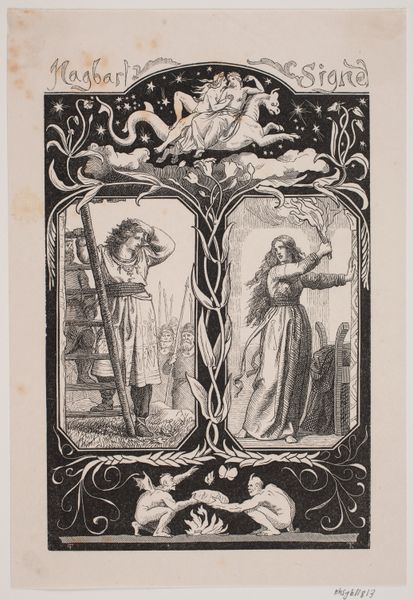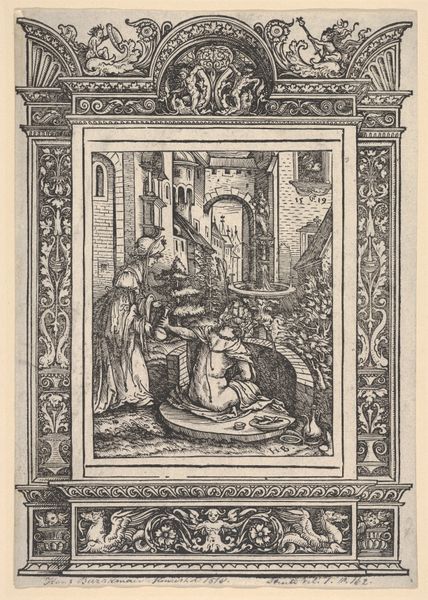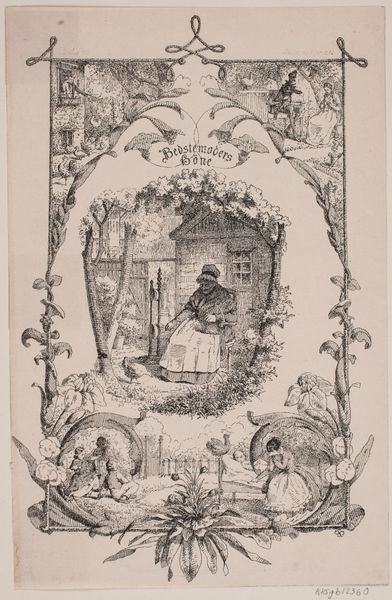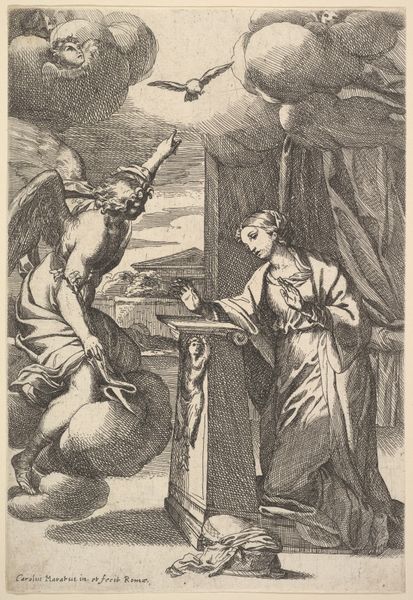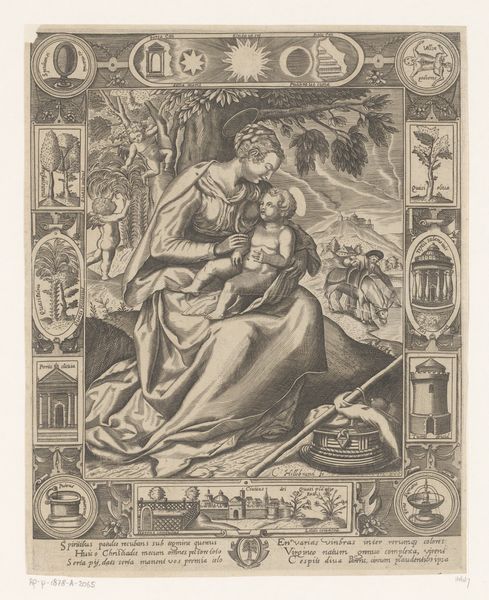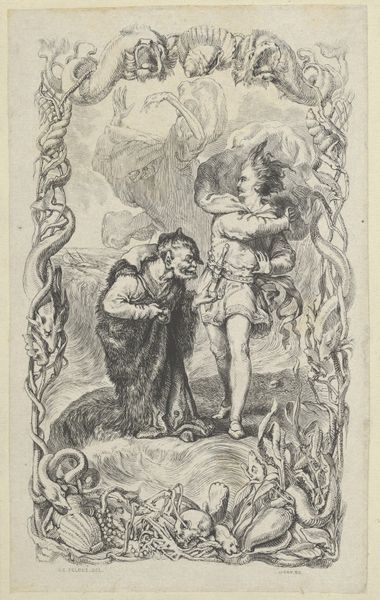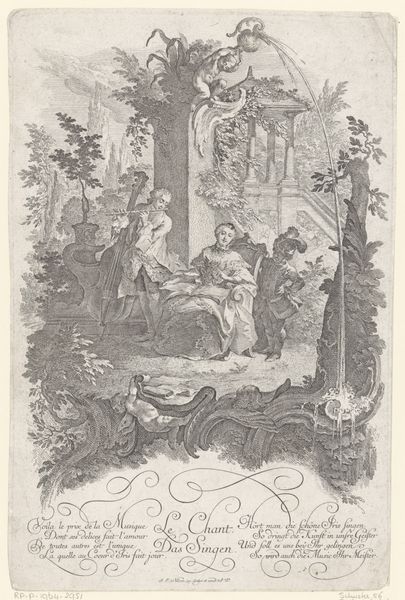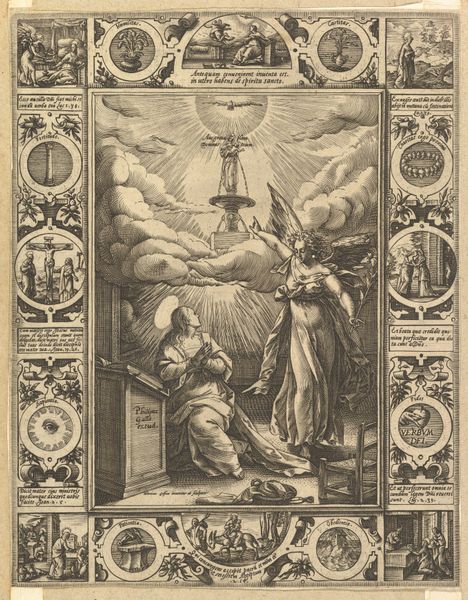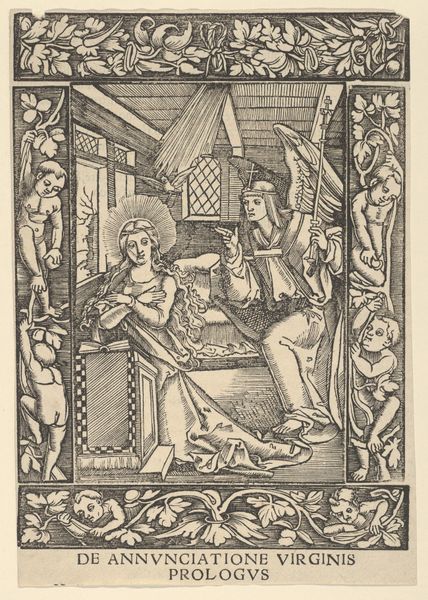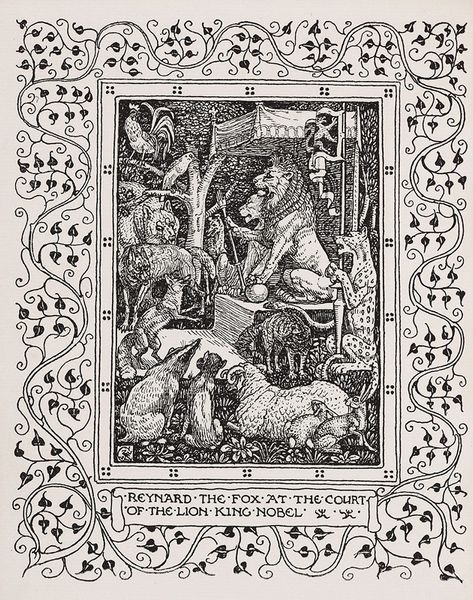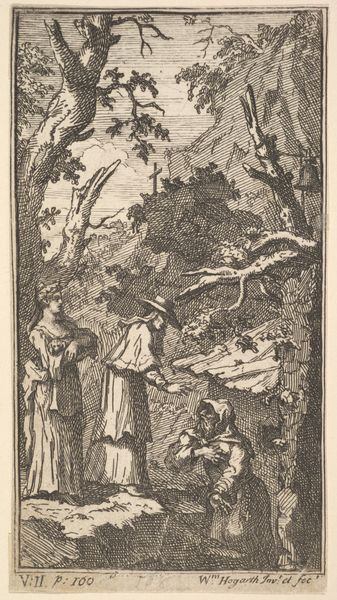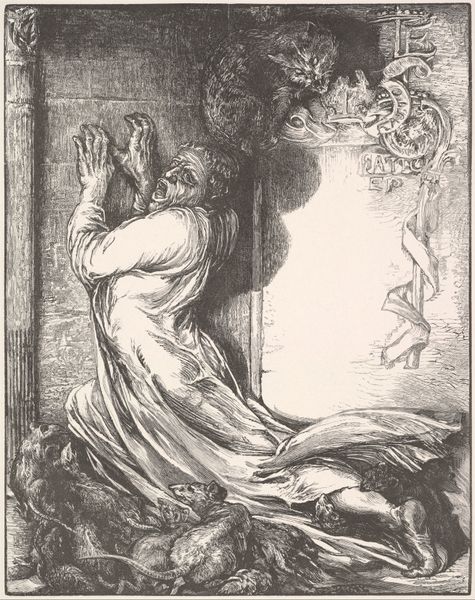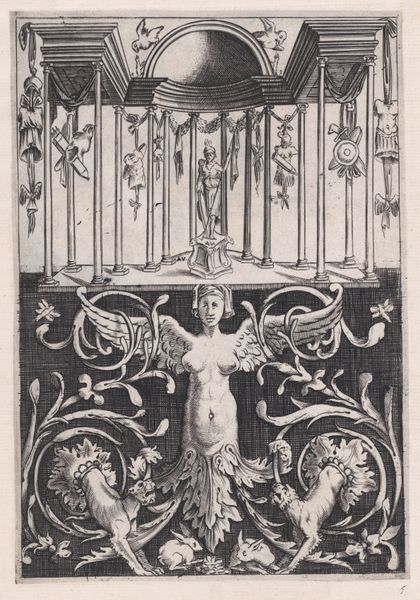
Dimensions: 173 mm (height) x 113 mm (width) (bladmaal)
Curator: Welcome. Today, we're looking at Axel Theodor Kittendorff's woodcut engraving, "Hagbard og Signe," created in 1852. It's an intricate piece of narrative art. Editor: My first impression is the high contrast, giving it a stark, dramatic feel. The division into distinct panels creates a fascinating comparative structure. Curator: Indeed. It's crucial to understand the tragic Nordic saga of Hagbard and Signe to truly appreciate Kittendorff's visual choices here. Their story, rife with forbidden love and ultimately death, echoes similar themes in narratives like Romeo and Juliet. Note how Kittendorff portrays Hagbard on the verge of being hanged while Signe stands defiant with a burning torch. Editor: From a formal perspective, observe the symbolic placement of these figures. Hagbard is framed within a rather angular setting; the harsh lines and shadows highlight his grim predicament. Signe’s panel, however, offers a slightly softer gradation. Also the allegorical duo that sit underneath—quite an unusual, darker element that seems to comment on fate or death! Curator: Precisely! These characters weren’t randomly created. The narrative speaks of deceit and the complex power dynamics embedded in familial structures and gendered expectations. Signe’s active role, as she is about to set her own home ablaze, represents the extreme consequences and limited choices for women in patriarchal societies of that era and, perhaps, those within the Viking Sagas. Editor: Looking more closely at Signe, her dynamic pose, particularly the extension of her arms mirroring the position of the figures up top, creates a compelling tension that adds a whole new dimension of the artist’s deliberate employment of contrasting and opposing forces. Curator: Kittendorff masterfully captured the tension and anguish embedded in this powerful myth of doomed lovers—that both lived in eras filled with wars that, at times, seemed constant. Through them, there's always an allegorical comment on freedom and the restraints placed by societies that, perhaps, we ought to re-evaluate from contemporary critical stances. Editor: A thoughtful interplay of composition and historical context; truly highlighting the enduring complexity within these graphic divisions.
Comments
No comments
Be the first to comment and join the conversation on the ultimate creative platform.
